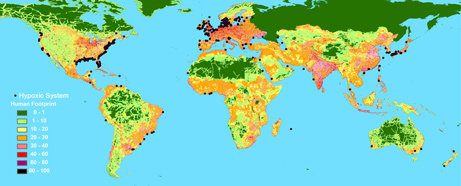with Vitamin C and MSM
Walter Last
Health authorities generally set such low limits for the recommended daily allowance (RDA) of vitamins and minerals that obvious deficiencies in most individuals are avoided but so that these nutrients do not become a threat to the pharmaceutical industry by preventing and curing diseases. In this article I like to show what can be done with higher amounts of vitamin C as pioneered by doctors Linus Pauling, Ewan Cameron, Abram Hoffer and others. The results are even better when combined with MSM (methylsulfonylmethane or dimethylsulfone) and DMSO (dimethylsulfoxide).
There are hundreds of vitamin C articles with positive results published in the peer-reviewed Journal of Orthomolecular Medicine (www.orthomed.org) which specializes in vitamin research. In an act of obvious bias the MEDLINE database lists all articles by medical research journals, including Time magazine and Readers’ Digest, but not the Journal of Orthomolecular Medicine. Because all these highly positive studies are not indexed by Medline, proponents of drug medicine can claim that there are no studies showing that vitamin C is useful and safe in the treatment of diseases.
Read moreMORE ENERGY & LESS DISEASE with Vitamin C, MSM and DMSO
Oxygen
Buteyko Method: Correct Your Breathing – The Oxygen Advantage – Shut Your Mouth And Change Your Life | Patrick McKeown | TEDxGalway (Video)
More videos down below.
22.06.2016
Description:
Decongest your nose, increase your body temperature and activate your bodies relaxation response in three to four minutes by simply altering your breath. Author of The Oxygen Advantage, Patrick McKeown guides a TEDx audience to do just that.
Patrick is a world renowned expert in the Buteyko Breathing Method and author of 8 best selling books including (his latest) The Oxygen Advantage, Close Your Mouth, Asthma Free Naturally, Anxiety Free: Stop Worrying and Quieten Your Mind, Sleep with Buteyko.
California: Threat Of ‘Dead Zone’ Developing Off Sonoma Coast
– Threat of ‘dead zone’ developing off Sonoma Coast
Climate change is the likely cause of unprecedented mass of oxygen-poor water off the Sonoma Coast, a phenomenon that could harm the region’s prized Dungeness crab and other marine life.
Scientists at the Bodega Marine Laboratory, who were the first to detect the hypoxic (low-oxygen) waters, aren’t calling it a “dead zone” yet, despite the similarity to a lethal condition along the Oregon coast for the past 12 years and forecasts that it will occur worldwide with global warming.
“There’s nothing dead,” said John Largier, an oceanographer at the UC Davis research facility on Bodega Head. But equipment on a bright yellow buoy anchored about a mile offshore has recorded dissolved oxygen levels low enough to cause “significant distress” for some marine organisms, he said.
Oxygen-poor water is common in deep water of the open ocean, but until this year had never been documented over the continental shelf close to the Sonoma coast, he said.
…
Global warming, right?
– Most Arctic Sea Ice For A Decade
– September 21 Breaks The Record For Most Sea Ice Ever Measured At Either Pole
And not one word about Fukushima….
– Sea Star Die-Off Worse Than Thought; Now Over Entire West Coast; Going From One Species To Others
Read moreCalifornia: Threat Of ‘Dead Zone’ Developing Off Sonoma Coast
US Scientist: Methane In Gulf ‘Astonishingly High’, As Much As 1 Million Times The Normal Level
Update: Gulf Of Mexico Water Sample EXPLODES! Other Samples Prove To Be Toxic
CHICAGO (Reuters) – As much as 1 million times the normal level of methane gas has been found in some regions near the Gulf of Mexico oil spill, enough to potentially deplete oxygen and create a dead zone, U.S. scientists said on Tuesday.
Texas A&M University oceanography professor John Kessler, just back from a 10-day research expedition near the BP Plc oil spill in the gulf, says methane gas levels in some areas are “astonishingly high.”
Kessler’s crew took measurements of both surface and deep water within a 5-mile (8 kilometer) radius of BP’s broken wellhead.
“There is an incredible amount of methane in there,” Kessler told reporters in a telephone briefing.
In some areas, the crew of 12 scientists found concentrations that were 100,000 times higher than normal.
“We saw them approach a million times above background concentrations” in some areas, Kessler said.
The scientists were looking for signs that the methane gas had depleted levels of oxygen dissolved in the water needed to sustain marine life.
“At some locations, we saw depletions of up to 30 percent of oxygen based on its natural concentration in the waters. At other places, we saw no depletion of oxygen in the waters. We need to determine why that is,” he told the briefing.
Coastal Water Study: ‘Dead Zones’ Multiplying Fast

A global map of “dead zones”—where coastal waters contain too little oxygen to sustain life—shows (as black dots) a concentration in the Northern Hemisphere, where human activity has had the most effect.
As of August 2008, there were more than 400 known “dead zones,” scientists said, up from just over 300 in the 1990s. Image courtesy Science/AAAS
“Dead zones” are on the rise, says a new study that identified stark growth in the number of coastal areas where the water has too little oxygen to sustain marine life.
There are now more than 400 known dead zones in coastal waters worldwide, compared to 305 in the 1990s, according to study author Robert Diaz of the Virginia Institute of Marine Science.
Related article: Are the oceans giving up?